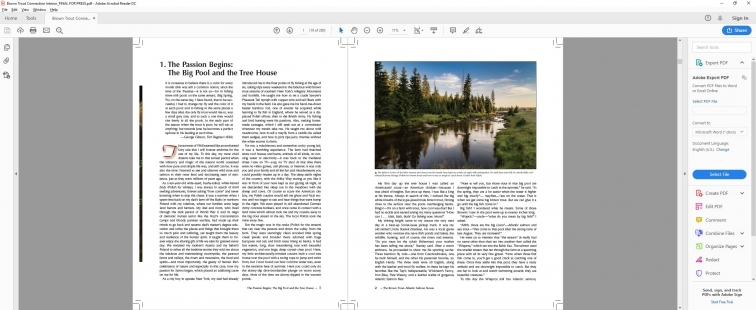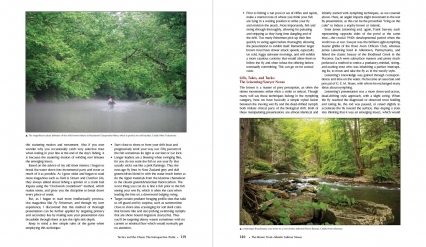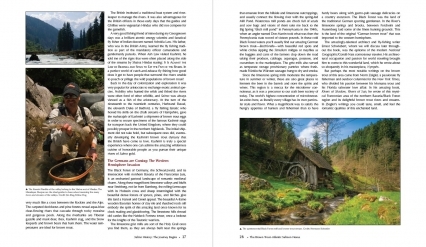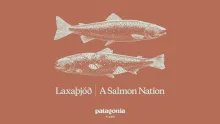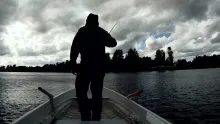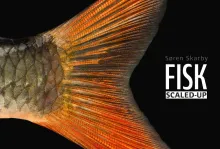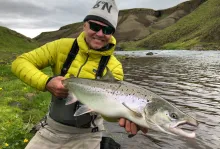When an author asks you to provide content for a book, it's hard not to think "That's going to be one heck of a book!"
Updated or edited 9 months ago
Be warned: I'm slightly biased when it comes to having an opinion on this book.
First of all: I contributed to the book. When an author asks you to provide content for a book, it's hard not to think "That's going to be one heck of a book!"
Secondly: I am in regular contact with the author. I haven't met him in person and will not call him a friend in the traditional sense, but friendships these days take many forms and shapes, and Matt Supinski is definitely one of my closer virtual friends, and comes over as a really nice guy, which I'm both sorry and pleased to say will have to rub off on a review of something he has written.
Thirdly: Matthew Supinski has a very good history when it comes to books. His two previous books "Steelhead Dreams" and in particular "Selectivity" were really excellent books, which I did like a lot and gave very positive reviews on this very site. Such a history tends to make me think that a third book from his hands must be equally good – or maybe better.
So when I started reading
through this new title from Matt, I have to say that I was on a positive vibe even before the very first page.
Did the book disappoint me then?
No, it didn't, and then again a little bit.
I was unfortunate to only have a PDF of the book for my first read, and I have to admit that I'm very much a "dead trees person", meaning that a lot of my impressions of a book comes from the tactile and visual feedback that comes from leafing through large format printed pages. I do read electronic books, and do so even on my phone, but those are usually text only, typically novels or short stories, and they are mostly adapted to be read on a screen, even a small one.
When books have photos and other illustrations, laid out to utilize a large page size and format, I do find it hard to stay focused when reading on a screen, even if it's a large, sharp and bright monitor. In this case I had registers and cutting marks, pictures flowing over to the next page and more, all invisible in the final print, but quite clearly in view in the PDF.
Also I was slightly underwhelmed by the layout, which appeared kind of bland and straight when seen on a screen. There's nothing to critique: it's tight, stylish and well done, but just doesn't really pop like the layout of some books do.
With all that said,
I also have to admit that I totally surrendered once I started reading the book. This book can be called a personal-historical-philosophical-practical book, meaning that it has its outset in Supinskis colossal experience, but also draws on a lot of past and contemporary anglers. Supinski uses this to ponder about the fish, fishing, the environment and locations while still conveying a lot of practical and useful information on fishing.
...a personal-historical-philosophical-practical book
This means that
you will find a row of chapters titled "The Benthos-to-Meniscous Strata Approach", "Tight-Line Euro/Slavic Nymphing", "Sink-tipping, Strip Teasing, and Brook's Pot-Shooting Methods", "Indicator Nymphing: The Glorified Bobber Salvation" and "Hopper Dropper/Dry Dropper".
As these titles indicates, this isn't just a cook book with recipes, but a book that has a very personal and different approach to explaining fishing methods and motivating why and how they work. The titles also illustrate another aspect of the book: its extremely wide scope. You could be tempted to think that a book like this was narrow. It focuses only on fishing for salmonids, and within the salmonids we're even limiting the species to brown trout and Atlantic salmon.
But don't worry. Supinski has a very wide horizon when it comes to fishing, and not only does he traverse the globe and talk about these fish worldwide, but he also traverses subjects and talks about culture, history, cooking, art and much more – as well as fishing of course, which does take up a major part of the book.
He spans space and time,
bringing us to many locations as well as back and forth in time through the words of people like Proper, Koch, Mariano, Fox, Schweibert, Kreh, Halford&Skues and many many more... even von Linné.
The book is well written. Supinski's writing style is elegant and easy to read, but not at all complex or convoluted. The book is large, but still a book you can sit down and read cover to cover if you feel like it. Unlike many other method books, which are often structured as handbooks, the text in this book flows easily, and it feels natural to read it continuously rather than consuming it in scattered bits. The book actually doesn't have an index, so finding things will be a question of reading or browsing your way to the target.
The first chapter
called "The Big Pool and the Tree House" starts out:
"The summer of 1968 seemed like an enchanted fairy tale that I will forever enshrine for the rest of my life. To this day, my most vivid dreams take me to that surreal period when the vibrancy and magic of the natural world coexisted with how pure and simple life was, and still can be. It was also the time I learned to see and observe wild trout and salmon in their most feral and fascinating state of existence, just as they were millions of years ago." and later continues:
"My first day up the tree house I was called an Americanski coura—an American chicken—because I was afraid of heights. But once up there, I was like a king at his throne. Always in search of fish, I noticed the big white mouths of the kype-jawed male brown trout, finning close to the surface near the pools overhanging banks. Bingo!—I'm on a farm with trout, how cool was that?"
These little excerpts very well illustrate the easy-flowing writing style and the personal angle on the subject. It's not difficult to become enchanted and to be left with an impression of passion and appreciation as well as a very deep knowledge of the subject. Of the history, the fish, the fishing, the people and the whole culture and community surrounding salmon and trout.
And mixed into all this you will come away with lots of specific knowledge and fishing methods, even recommendations on gear choice and flies, all spiced up with world class photos from world class fishing spots.
It's very hard not
to like this book, and even without being biased, as described in the beginning of this review, I'd be hard pressed not to give it a global class rating. Add to that that the book is actually quite inexpensive. At 30 US$ for the hardcover book, it's way below similar large format books in price.
The fact that I haven't handled the book does deter me a bit, but knowing the quality of Supinski's previous books and the track record of the publisher, Skyhorse, gives me confidence that its physical appearance will not disappoint. I will stay with the global class, and look forward to fondling the book, which will soon be on its way to me.
More facts
The book used to have its own web site. It's dead now (brownatlanticnexus.com)
The publisher's page on the book.
You can find Matt Supinski on Facebook.
Matt is also on Instagram.
- Log in to post comments

